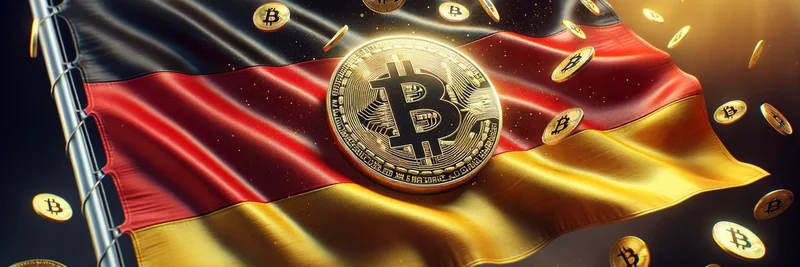You've likely come across sensational headlines about the German government "deciding" to sell off 50,000 Bitcoin (BTC) when the price was hovering around $54,000, only to miss out on a whopping $3.57 billion in profits as BTC's value soared later. Sounds like a massive blunder, right? Well, not so fast. As highlighted in a recent X thread by Aidan Larkin, Founder and CEO of Asset Reality, this wasn't a discretionary move—it was mandated by asset forfeiture laws.
Let's break it down simply. Asset forfeiture is a legal mechanism governments use to seize and sell assets tied to criminal activities. Think of it as the authorities taking away ill-gotten gains from bad actors, like drug dealers or fraudsters, to prevent them from profiting further. In the crypto world, this applies to digital assets like Bitcoin that are confiscated during investigations. Once seized, laws in many jurisdictions, including Germany, require these assets to be liquidated—turned into cash—as soon as possible to preserve value and fund victim compensation or law enforcement efforts.
In this case, the German government wasn't sitting on Bitcoin as an investment. These coins were likely from a bust, such as the infamous Movie2k piracy site operation earlier in the year, where authorities seized nearly 50,000 BTC. They had to sell because holding onto volatile assets like crypto isn't an option under forfeiture rules. Holding could lead to even bigger losses if the market dips, or legal complications if the original owners challenge the seizure.
Aidan Larkin, a leading expert in seized asset management, called out the misinformation in his post, quoting a viral tweet from Watcher.Guru that framed it as a poor "decision." He emphasized, "The Govt didn’t 'decide to sell'. They had no other option. That’s how asset forfeiture laws work." This is crucial for blockchain practitioners to understand, especially in the meme token space where projects can sometimes skirt regulatory edges—knowing how seizures work can help you navigate risks and build more compliant ecosystems.
Why This Matters for Crypto and Meme Tokens
While this story centers on Bitcoin, it has broader implications for the entire crypto ecosystem, including meme tokens. Meme coins, often launched on blockchains like Solana or Ethereum, can attract scrutiny if linked to scams or illicit activities. Governments worldwide are ramping up crypto enforcement, with agencies like the U.S. DOJ and Europe's Europol seizing millions in digital assets annually. If your favorite meme project gets tangled in legal woes, those tokens could be forfeited and sold off, impacting market liquidity and prices.
Larkin's insights remind us that headlines often oversimplify complex legal processes. For meme token creators and holders, staying informed about regulations can prevent pitfalls. Tools like on-chain analytics can help trace clean funds, but ultimately, compliance is key to longevity in this wild west of blockchain.
Upcoming Talk at Digital Asset Summit
If you're keen to dive deeper, Larkin will be addressing this exact topic at the Digital Asset Summit (DAS) 2025 in London from October 13-15. Hosted by Blockworks, DAS brings together builders, investors, and regulators to shape the future of digital assets. It's a prime opportunity to clear up myths around seized crypto and learn best practices for asset management in the blockchain space.
At Meme Insider, we're all about equipping you with the knowledge to thrive in crypto. Whether it's the latest meme token launches or regulatory hurdles like asset forfeiture, we've got you covered. What are your thoughts on government crypto sales? Drop a comment below!
Key Takeaways
- Governments must sell seized crypto under asset forfeiture laws to avoid risks and comply with regulations.
- The German BTC sale wasn't a "mistake"—it was legally required.
- For meme token enthusiasts, understanding seizures can protect your investments from regulatory surprises.




